
Give your puppy a safe place to hide
Read Time: 6 minutes
Crate training your puppy can be beneficial to dog owners who don’t want to leave their puppy unsupervised and with full reign of the house. Crate training can prevent damage to your home and keep your pet from getting into trouble while unsupervised.
If you feel bad about crating your dog keep in mind that just because you’ve crate trained your puppy doesn’t mean you need to keep them crated every day. Crate training can be useful even for those who work from home or are retired. It can make emergency situations and boarding less stressful for your dog. Plus, if introduced properly, your dog’s crate will become a place where they feel safe and hang out in to relax throughout the day.
Benefits of Crate Training Your New Puppy
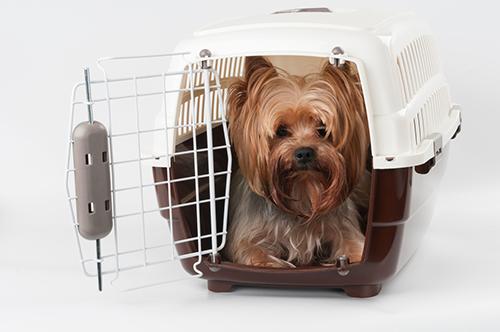
Crate training a puppy can introduce a number of benefits that will help you throughout your dog’s life. Whether or not you’ll need to crate your dog on a daily basis, having your dog crate trained can help them handle any situations where they’ll need to be confined.
Gives Your Dog Their Own ‘Room’
Establishing your dog’s crate as ‘their’ space can satisfy their natural denning instinct. Having an enclosed space to hide will help your puppy feel safe, warm, and comforted. This can help them to deal with stress, anxiety, and any stressors in their environment.
Makes House Training Easier
A crate can come in handy when teaching your puppy to control their bladder. Because dogs do not like soiling the space where they sleep they will be more inclined to hold the contents of their bladder until they are let out. While you should never use the crate for longer than a few hours, depending on your puppy’s cage, it can help you teach them bladder control when you’re not readily available to take them out.
Prevent Damage or Injury When Unable to Supervise
Puppies, and their adult counterparts, can get into plenty of trouble when you aren’t around to supervise their playtime. By crating your dog while you’re gone, you are lowering the chances of valuable possessions being destroyed.
Young pets are also susceptible to getting themselves injured when exploring your home unattended. It’s easier for both of you if he’s trained to quietly sit in his crate while you’re away or working on something potentially dangerous to him.
Playpens are another good option when needing a place to contain your pet while you’re unable to supervise.
Less Stress During Emergencies
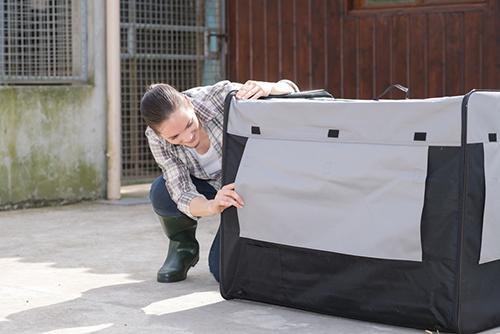
In an emergency situation where evacuation is required, your dog will likely spend a significant amount of time in a crate while being transported to safety. This could be with you or with an evacuation team.
While you cannot completely mitigate the stress of evacuations, having your dog crate trained will help ease some of his anxieties. You’ll also already have a crate familiar to him with blankets and toys that smell like home.
Lower Anxiety When Staying at a Vet Clinic
If you drop your puppy off for vet visits, grooming services, or boarding, he’ll be spending a significant portion of his day in a crate or kennel. Having your puppy crate trained will ease some of the stress of being in a crate in an unfamiliar place.
Drawbacks to Crate Training Your New Puppy
Drawbacks to crate training your puppy only come from incorrect usage of the crate.
You Need to Be Careful How You Use Crates for Discipline
Your puppy’s crate should never be used for only disciplinary purposes. This can lead your dog to fear or resent their time in the crate. It might not seem like a big deal if your puppy is rarely crated, but this can lead to a lifetime of stress as they grow older and encounter grooming appointments, vet visits, and other scenarios where they may be crated.
You’ll Need to Keep Track of How Long Your Pet Has Been Crated
You’ll also want to be wary of keeping your puppy or adult dog in a crate for too long. The most a dog should stay in a crate without a potty break is eight hours on average. Never crate your dog for longer than he can hold his bladder.
Younger puppies can only be crated for an hour at a time, gradually increasing as they pass eight weeks of age. You can bump this time to three-hour periods until your puppy reaches around 3 ½ months. From there you can slowly move up their time spent in the crate in relation to their ability to hold their bladder.
If you think you’ll be gone for longer than your dog can handle, you have options. Look around your area for doggy daycares, dog walking services, dog-friendly workplaces, or an option to come home for your lunch period. You can also set up a playpen for your dog to give them more room to roam around without giving access to your entire home.
What Type of Crate Should You Get for Your Dog?
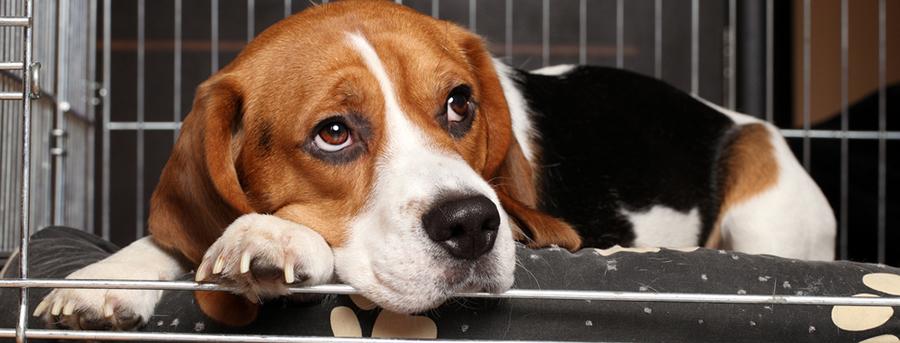
When it comes time for you to pick out your dog’s crate, you’ll find there is no shortage of options. Depending on your budget, needs, and preferences, you’ll want to narrow your search down to one of the following types of crates:
Wire
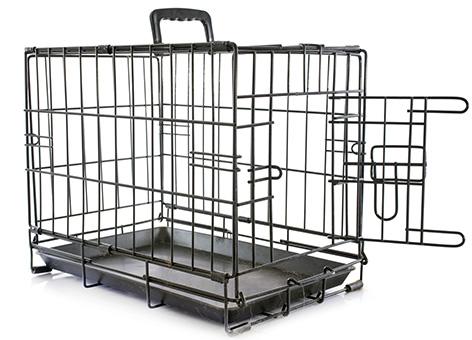
Wire crates are good for giving your dog a space that is well-ventilated and that they can see out of. This can be a good fit for a dog who doesn’t like to be covered or enclosed.
While noisy and less attractive than other crating options, a wire cage is easy to move and clean. This makes it a popular choice for puppy owners.
Soft-Sided
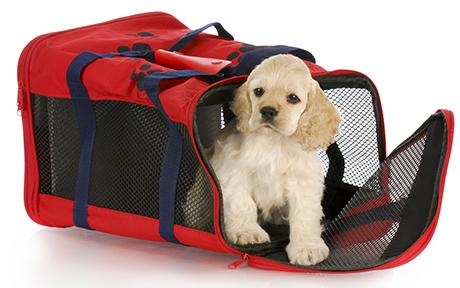
Soft-sided crates are much less durable than wire options. While they are easy to move, store, and travel with, soft-sided crates generally aren’t an option for large dogs.
If you have a laid-back pup who won’t try too hard to escape, a soft-sided crate could be the best option.
Luxury
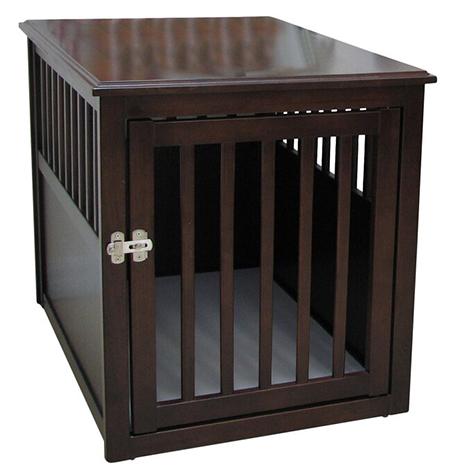
Luxury crates are perfect for those who don’t want to mess up the aesthetic appeal of their living space. Dog crates are not always the most attractive pieces to have in a space where you entertain guests. Luxury crates usually have a wood finish and can even double as a side table for double the functionality at only half the cost.
These tend to be a bigger investment. If your puppy still has a ton of growing to do, investing in a luxury crate may not be the best financial decision. If your end goal is a luxury crate but you aren’t sure how big your dog will be, wait it out with a cheaper wire crate before making a big purchase.
Plastic
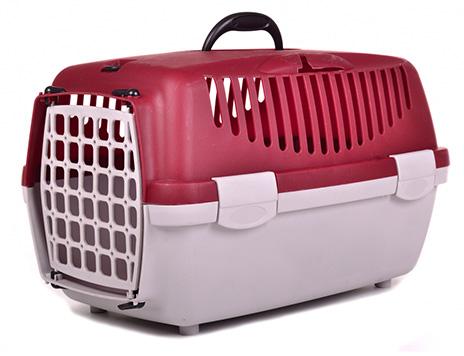
Plastic crates, sometimes called flight kennels, are good if your puppy prefers to be more enclosed. These crates are difficult to escape from, often airline travel certified, and can be broken down and stacked for storage.
Where Should You Place Your Dog’s Crate?

You want to put your dog’s crate in a space where your family spends most of its time. This will most likely be the living room. At night you’ll then want to either move the crate to your bedroom or have a second crate situated where you normally sleep. This helps to meet your dog’s needs for socializing during the day while giving them the security of being near you at night.
What Should You Put in Your Dog’s Crate?
You likely have questions regarding the interior design of your puppy’s new room. You want their den to be a cozy, comfortable space they’re happy to spend time in. You’ll want to put some form of bedding in your dog’s crate. Over time you’ll figure out which type of bedding your dog prefers given the wide variety of options available to pick from.
Dog toys can be placed in the crate to occupy your puppy’s attention and keep them from becoming stressed or bored. It’s best to include indestructible toys in your dog’s crate as plush toys can become choking hazards if torn apart.
Covering your dog’s crate with a blanket is another way to make them feel safe and at home. You’ll want to judge your dog’s reaction to having their crate covered. Some prefer it and feel safer while other dogs dislike the feeling of being enclosed.
While bedding and toys are good options to keep your puppy comfortable and entertained, you’ll want to leave food and water outside of the crate. Allowing your dog access to water can increase the likelihood of them having an accident. And by keeping food in your dog’s crate you are encouraging free feeding which eliminates any structure to their meals.
When Can You Start Crate Training Your Puppy?
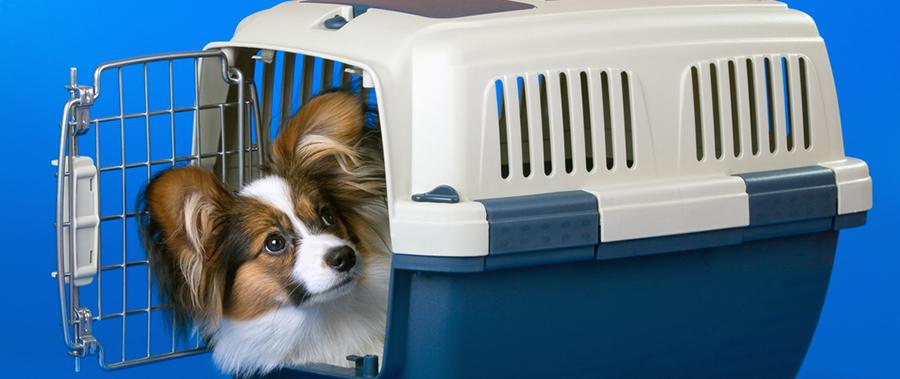
You can begin crate training your puppy as soon as you bring them home. Getting your puppy used to crates at a young age will help them ease into being regularly crated as they grow older. You’ll want to keep in mind your puppy’s age, however, to ensure you aren’t keeping your puppy crated for longer than their bladder can handle.
How Not to Use a Dog Crate
Dog crates should be a positive experience for your puppy. Never use a crate solely for discipline. If you punish your puppy by forcing them into their crate, you’ll not only cause anxiety for your dog at the moment, but you can also make future situations where crating is required become extremely stressful experiences.
Understanding how to incorporate the benefits of crate training into your dog’s life, without causing negative associates with the crate, can make both your life and your dog’s life easier.

